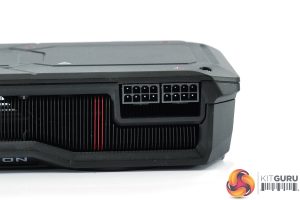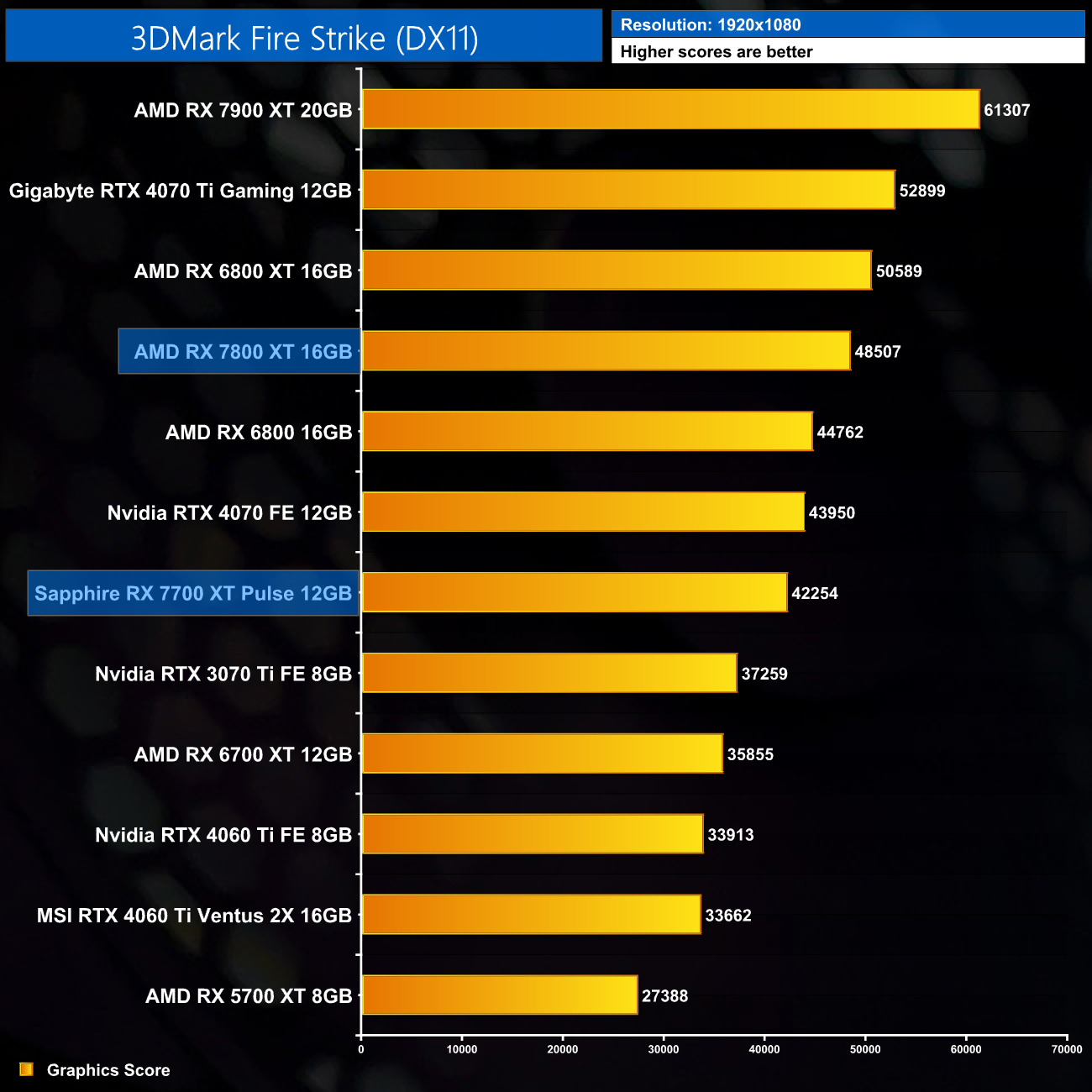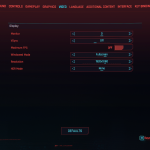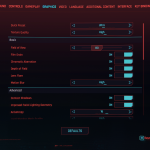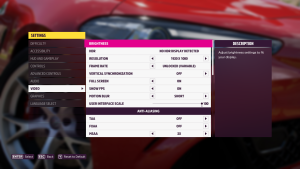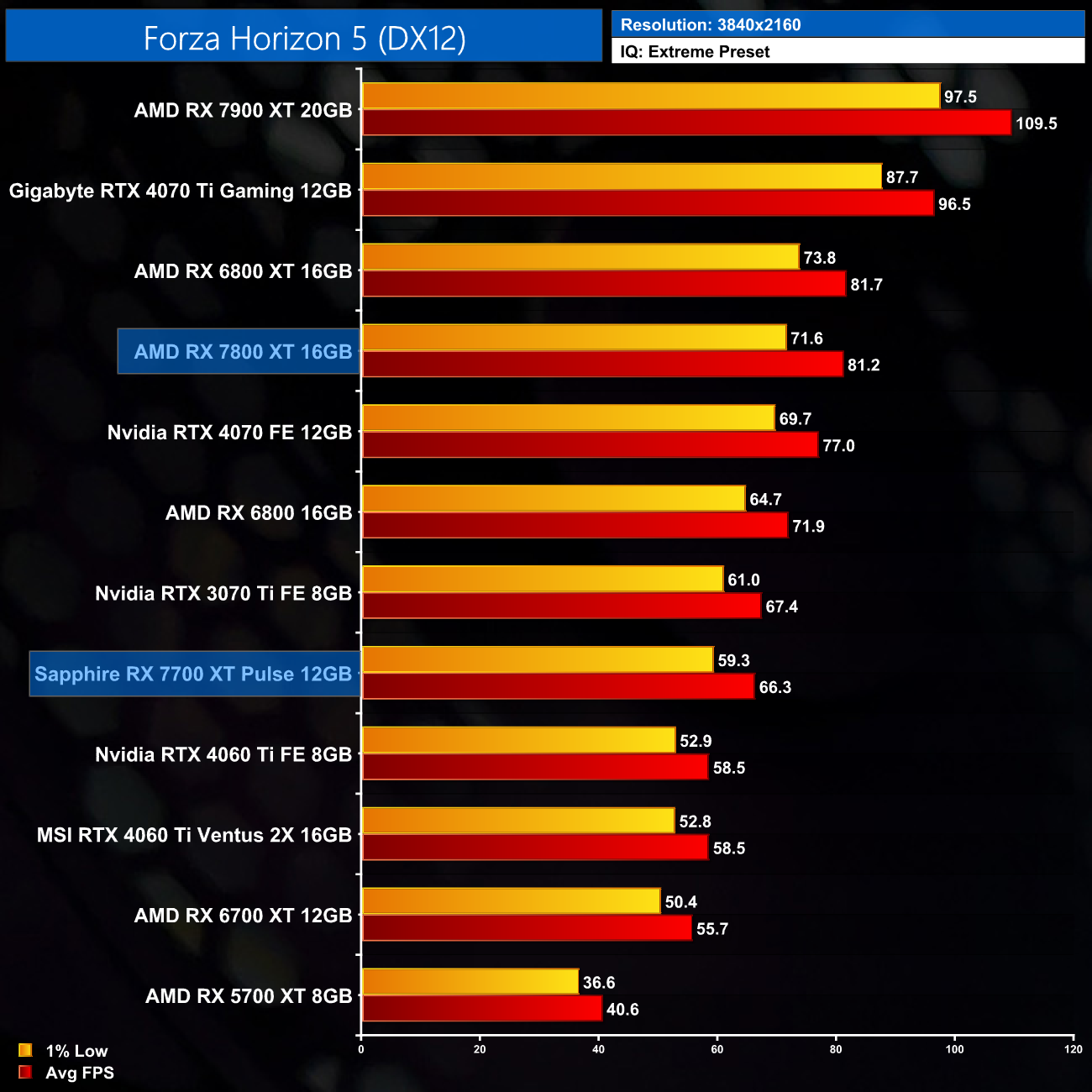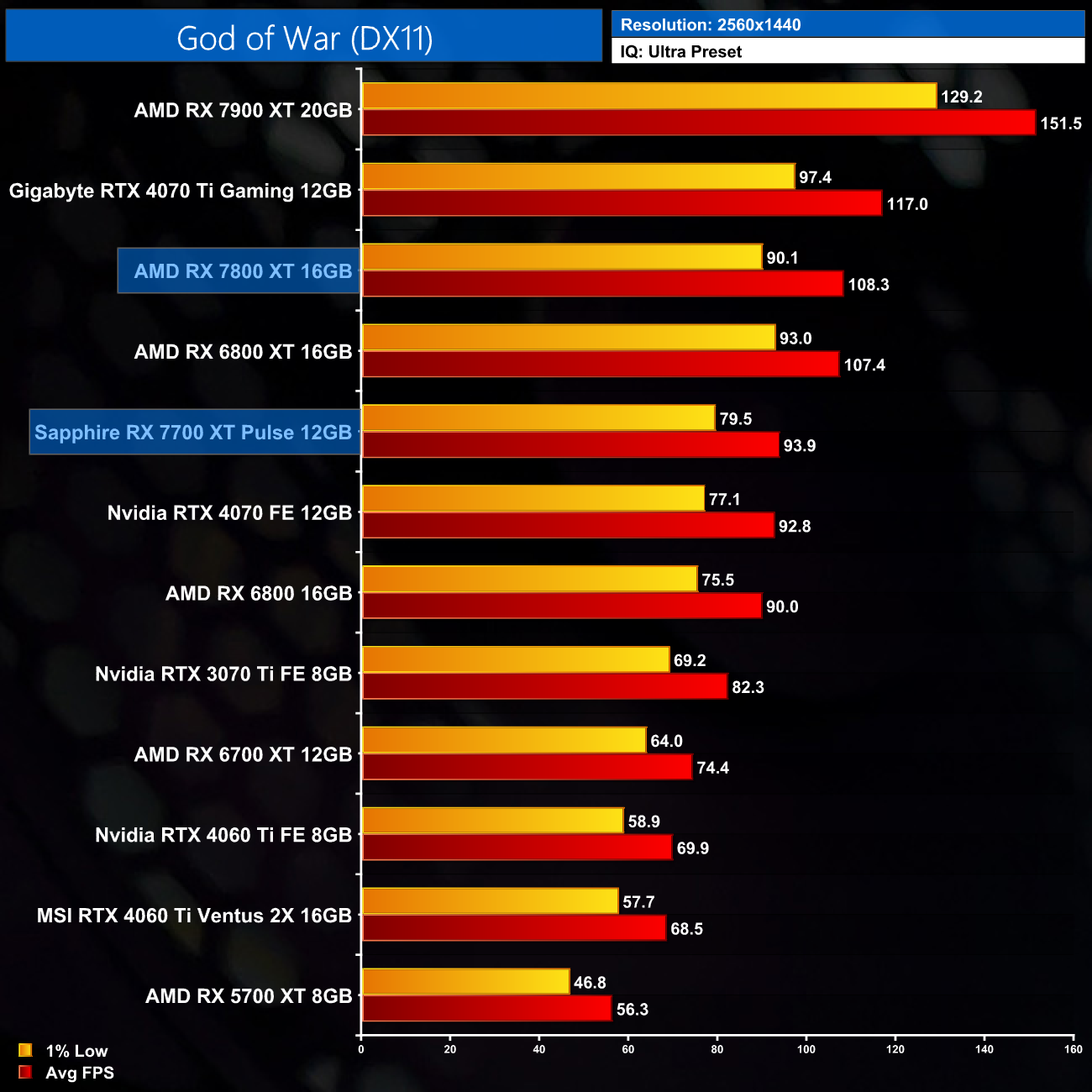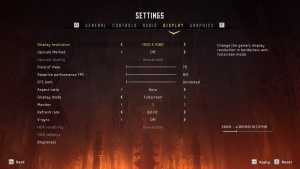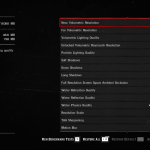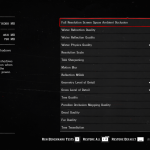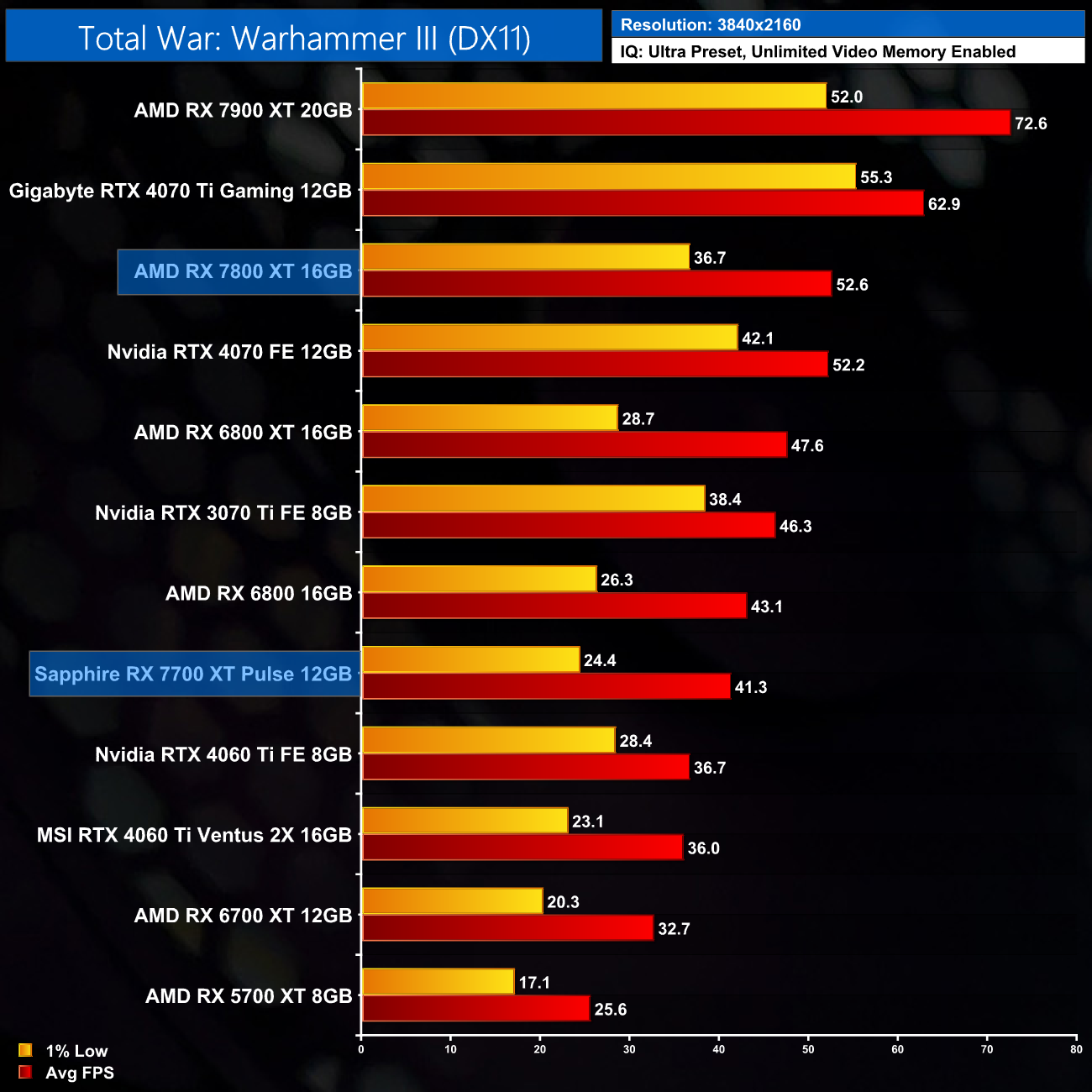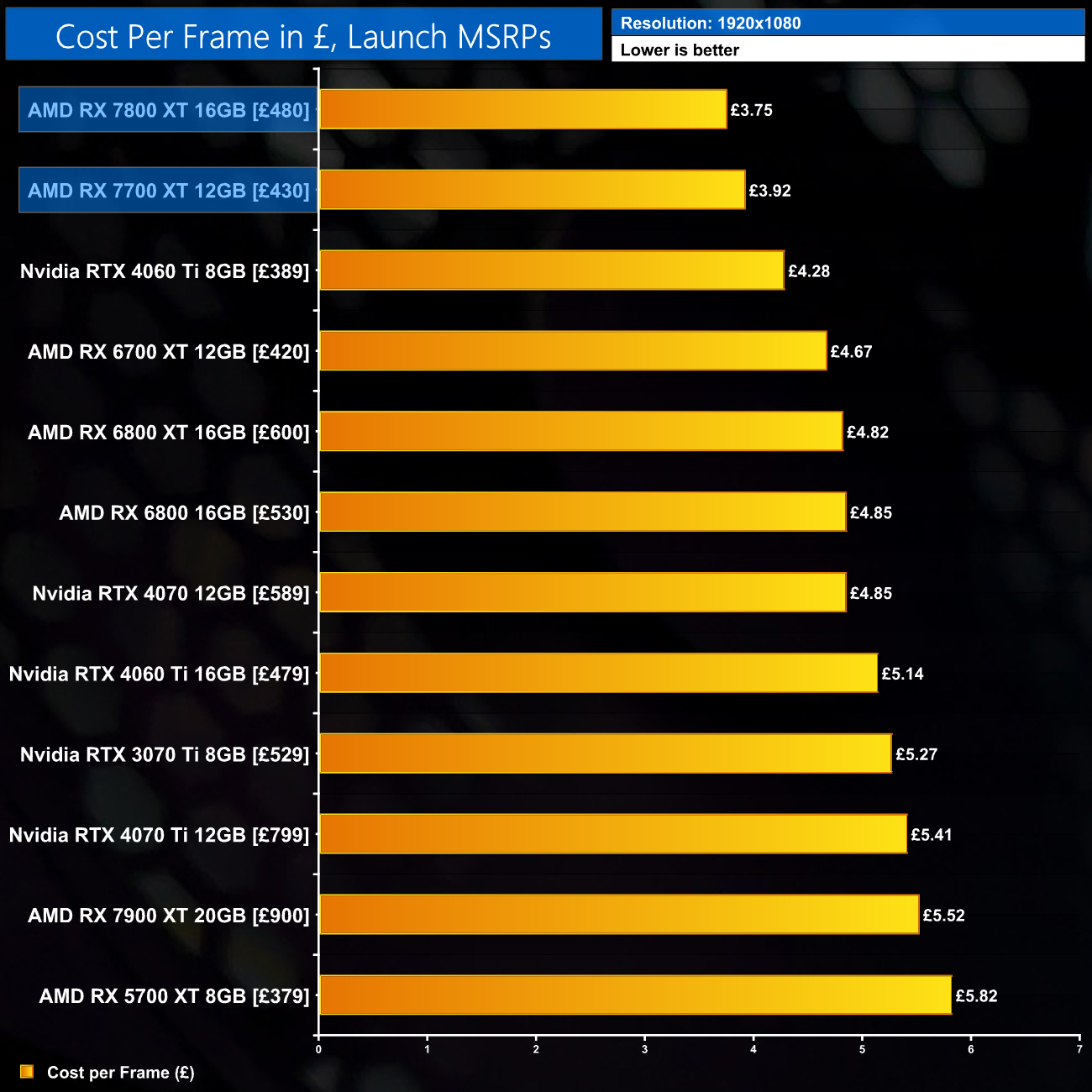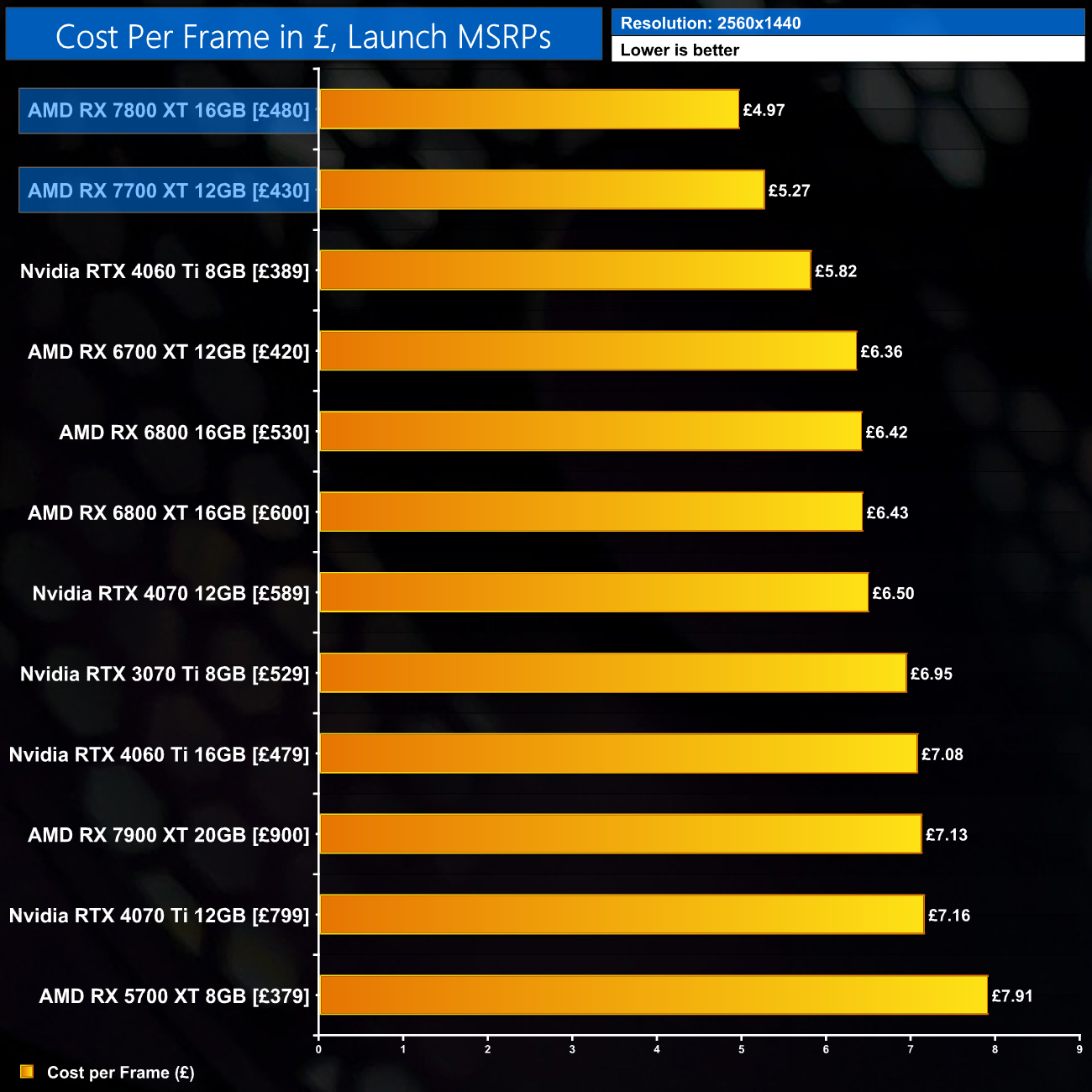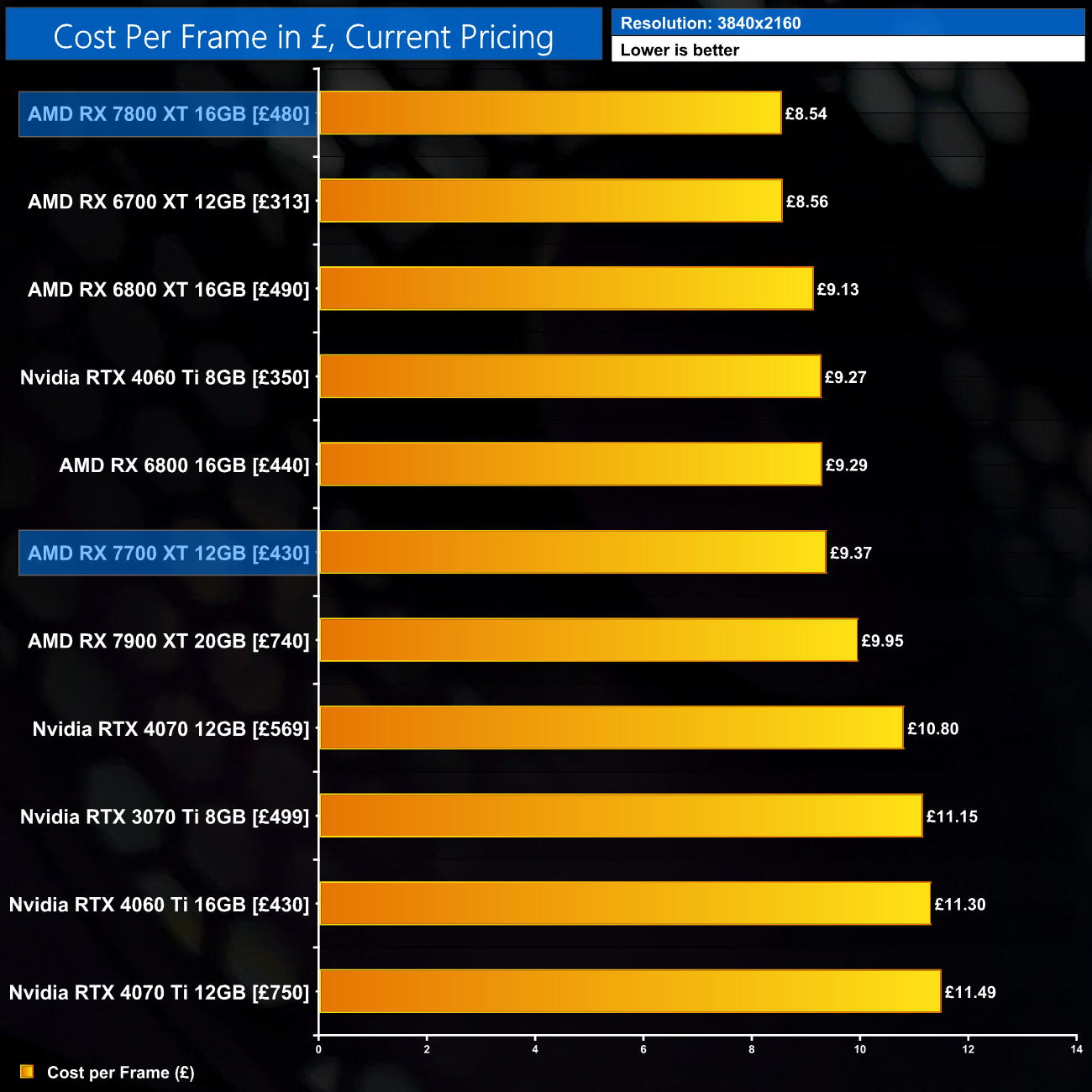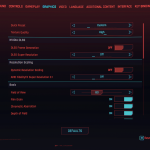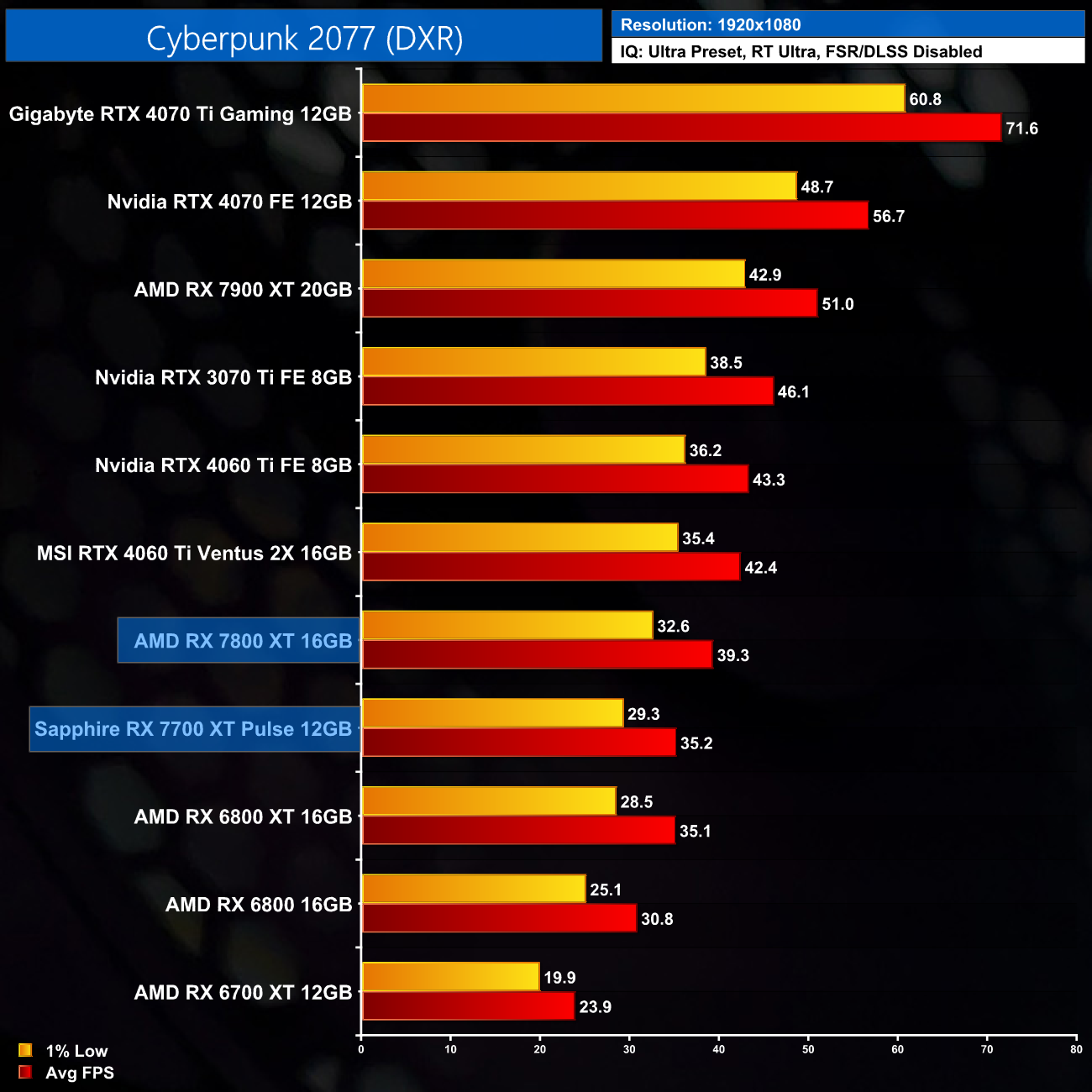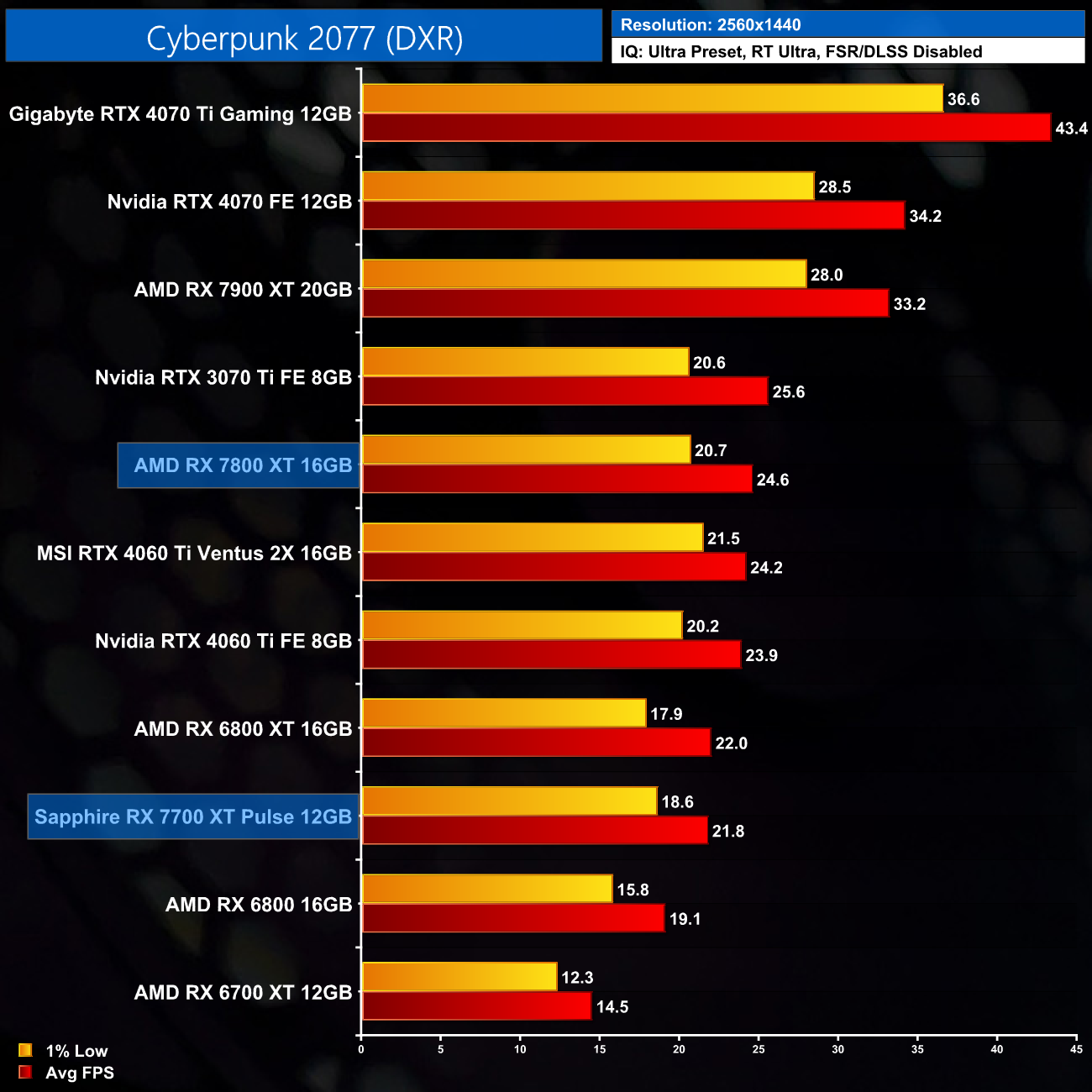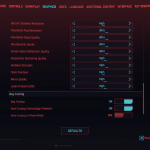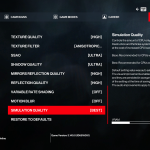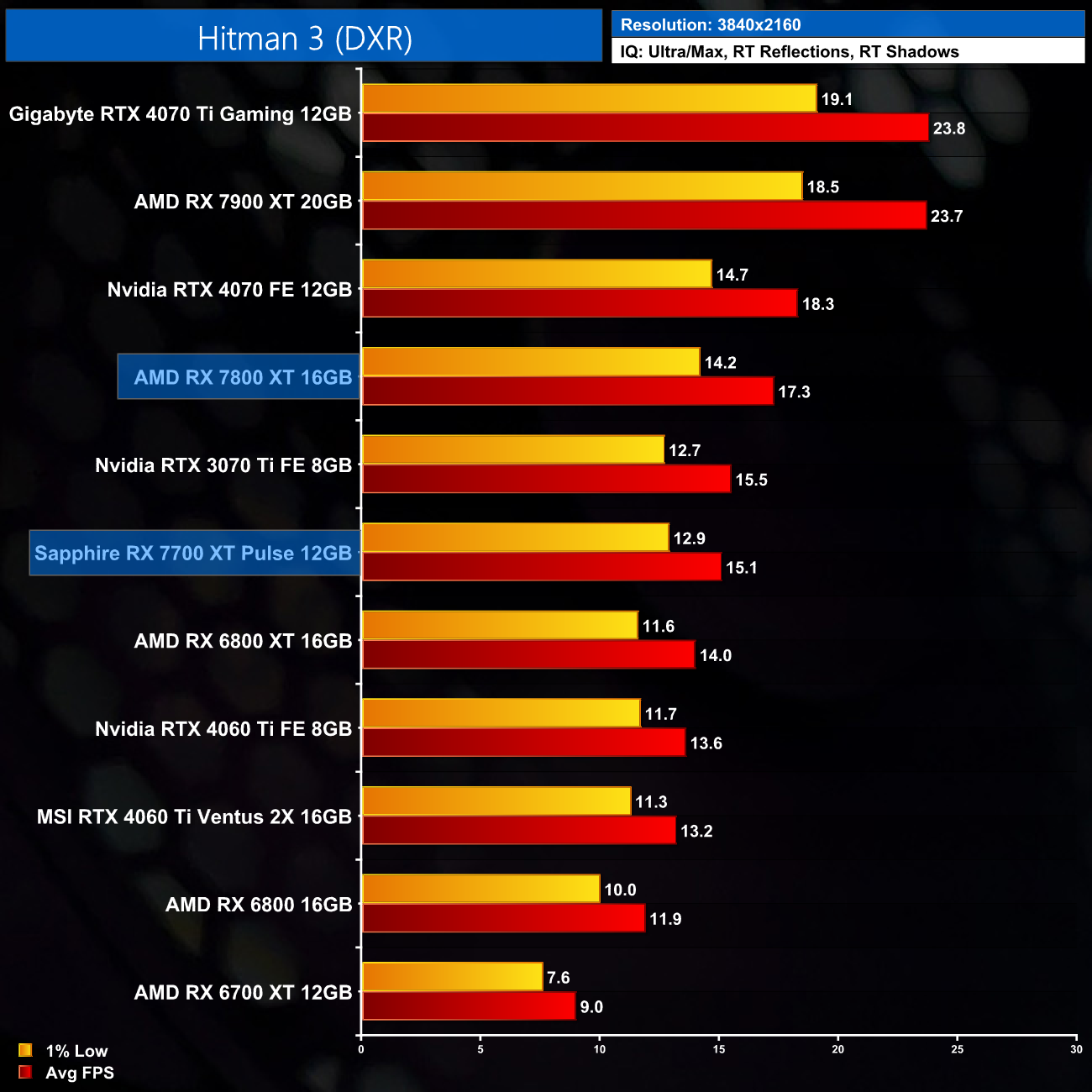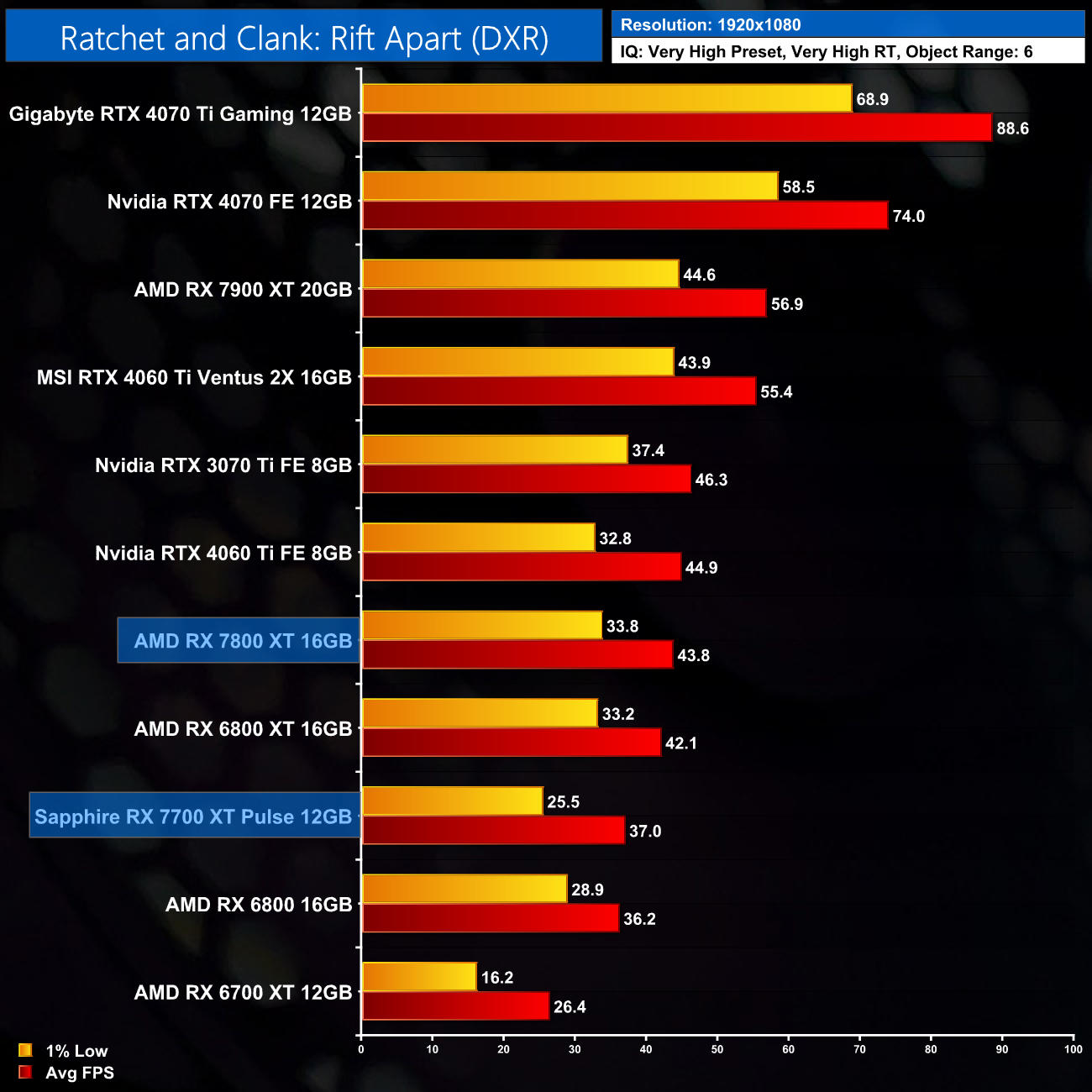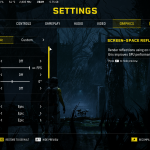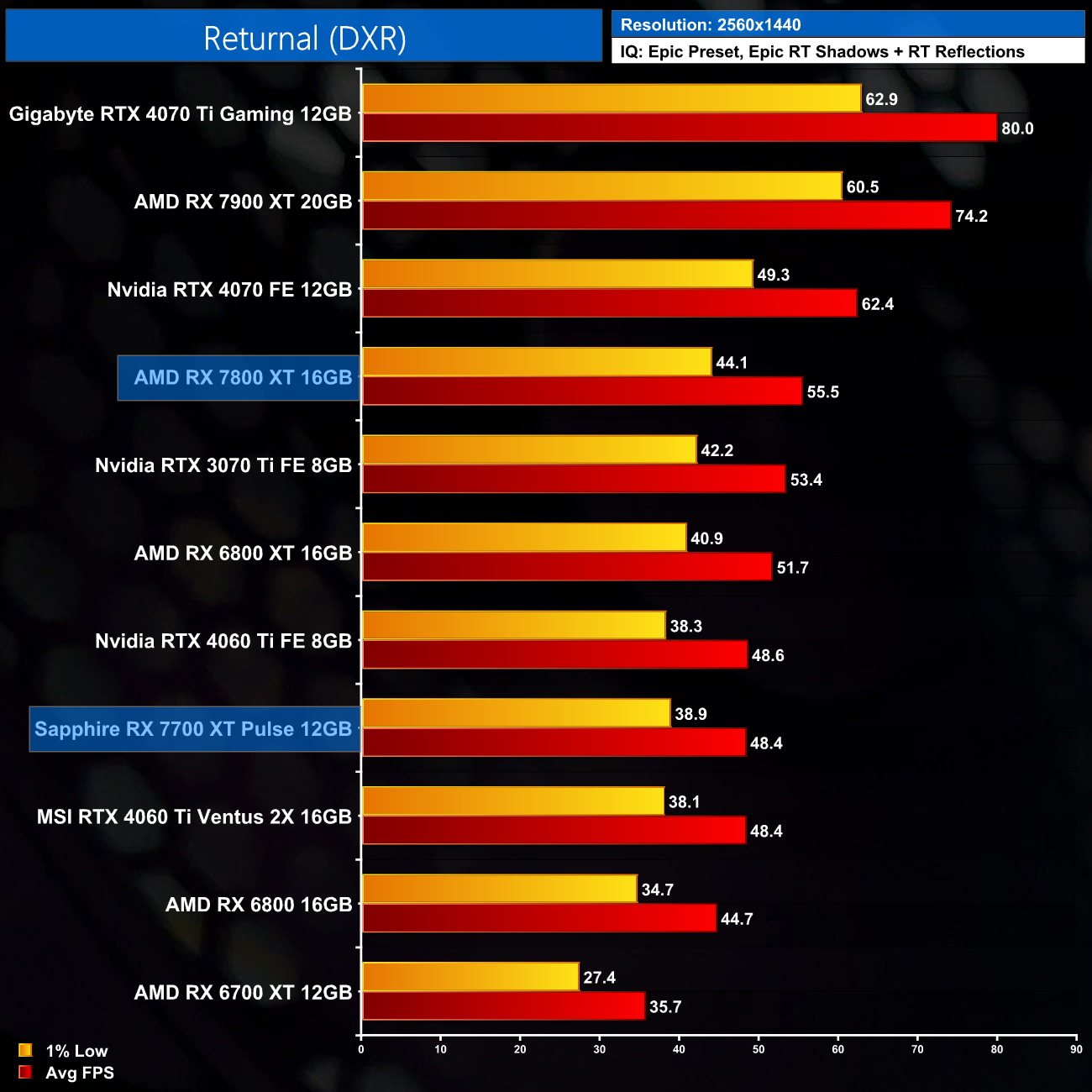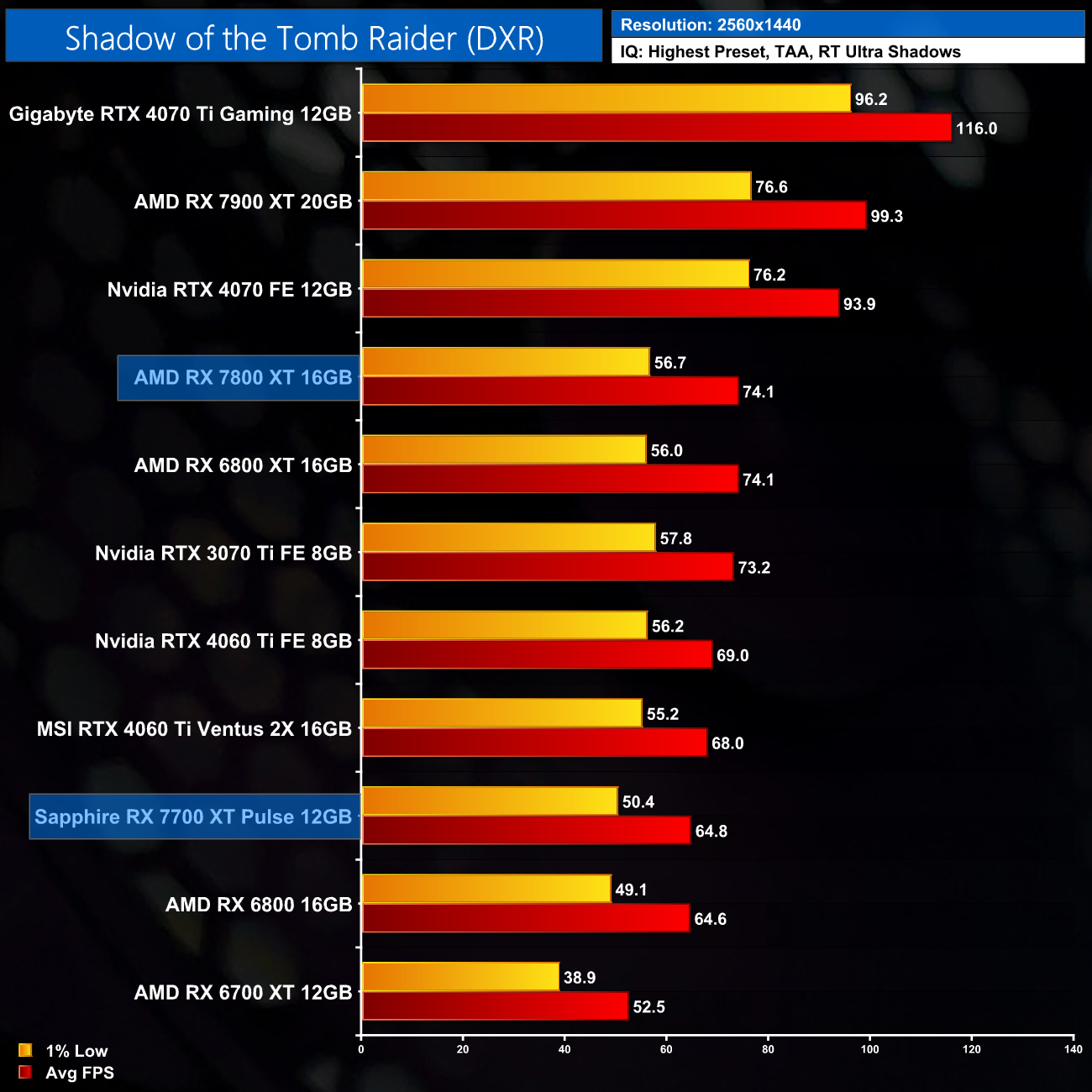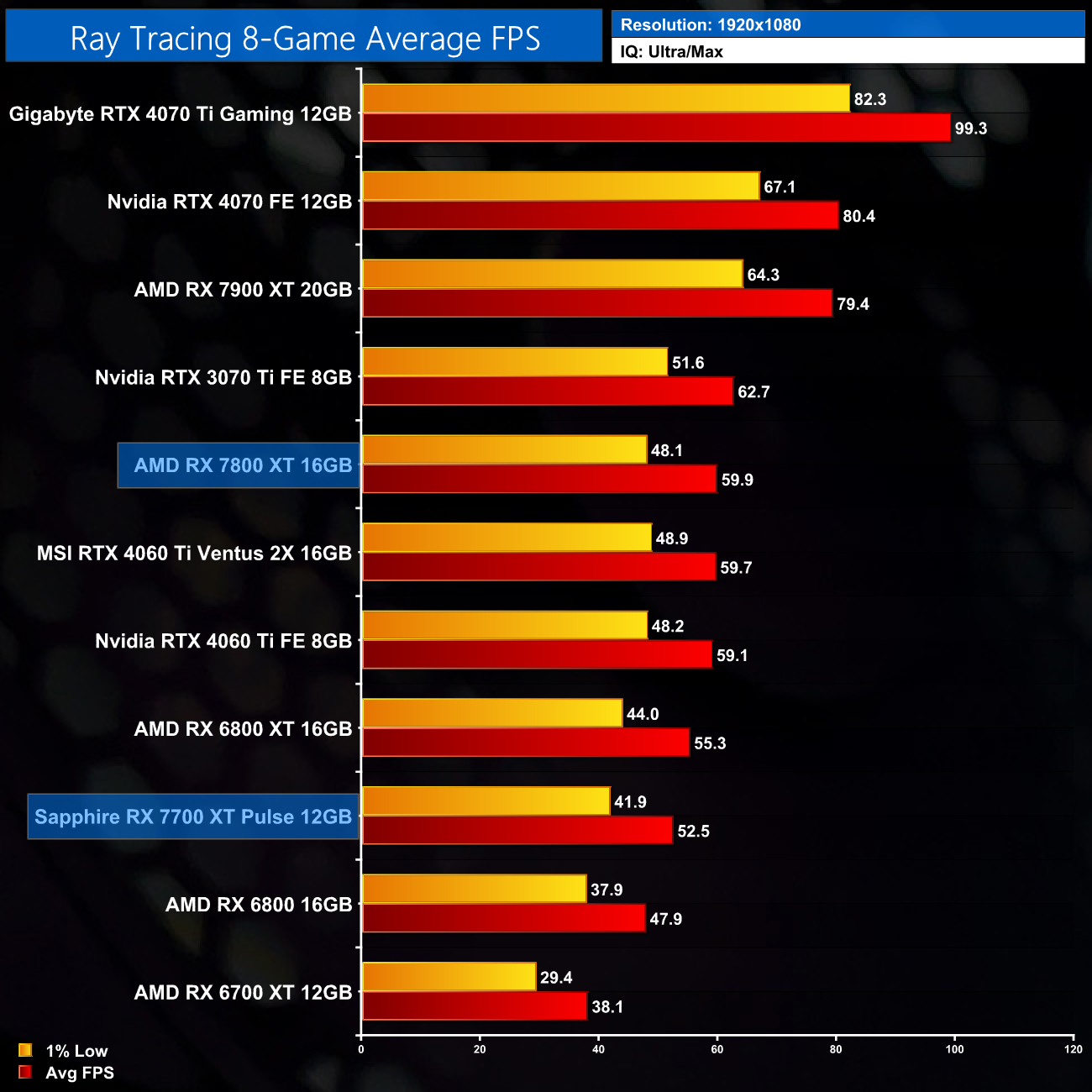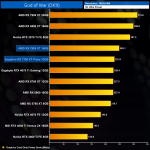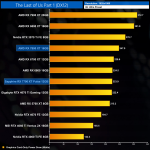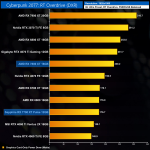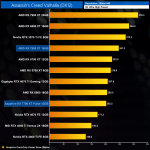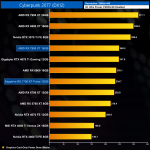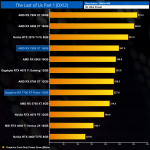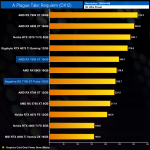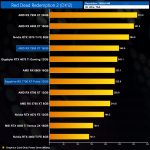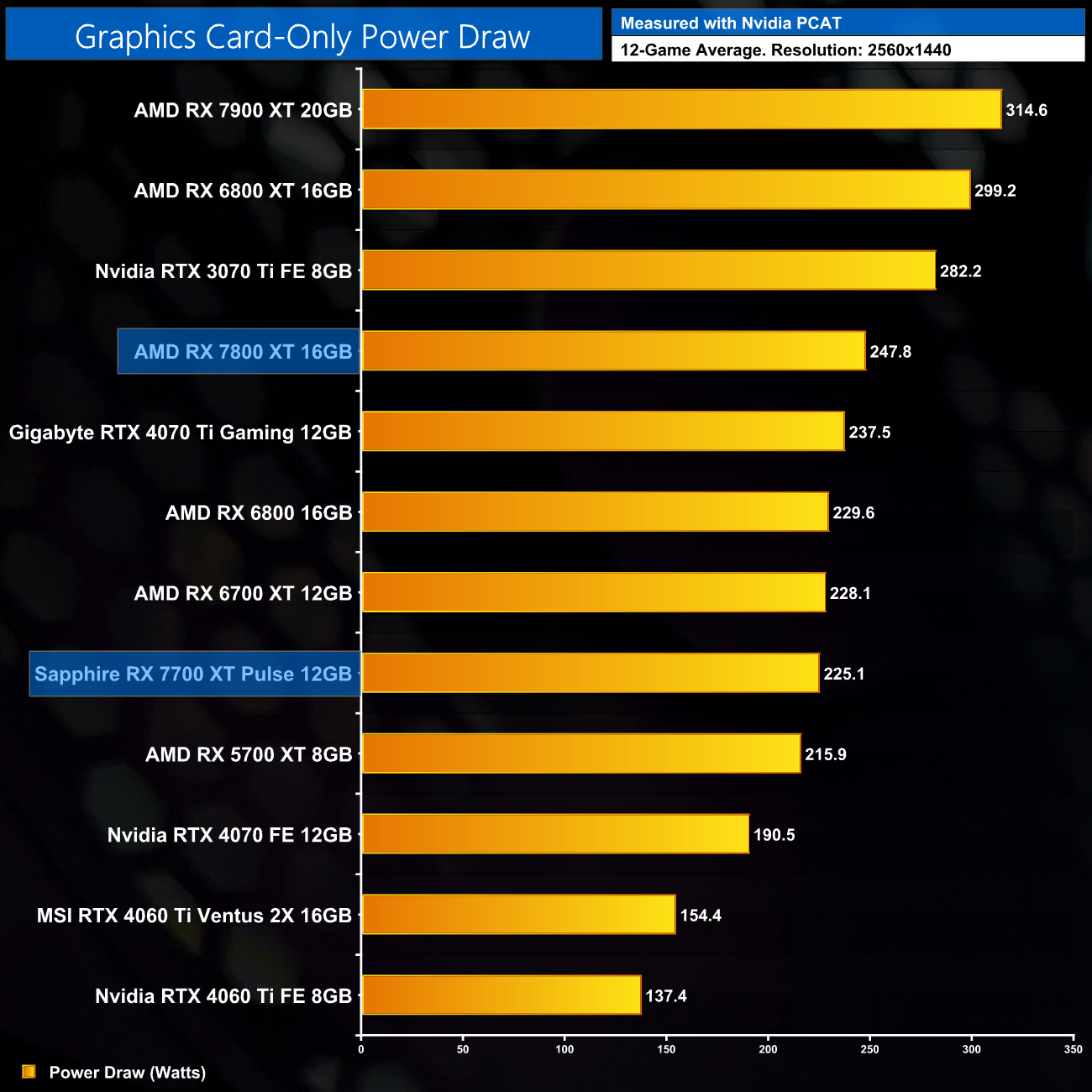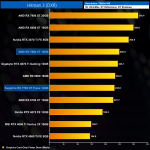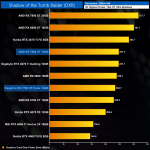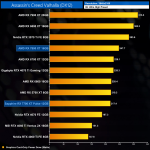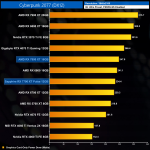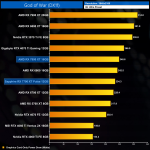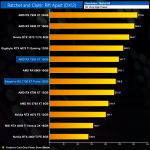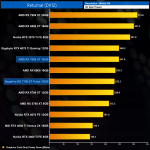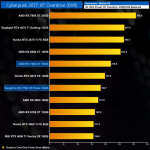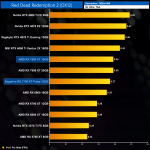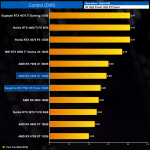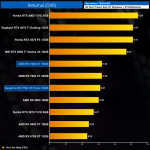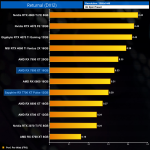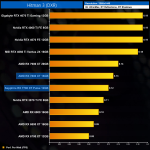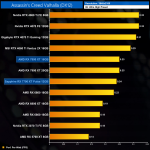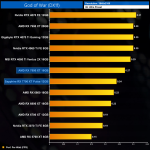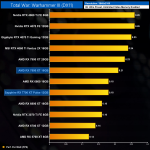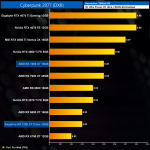
Hot on the heels of their announcement at Gamescom 2023, today marks the release of AMD's new mid-range GPUs, the RX 7700 XT and the RX 7800 XT. This review will focus on the latter model, though we do have a separate analysis of the RX 7700 XT if you want to read that. Built on new Navi 32 chiplet-based silicon, this graphics card hits the market at £479.99, and AMD claims it is faster than Nvidia's RTX 4070. We put it to the test over twelve games, plus another eight tested with ray tracing, to find out exactly how it performs… and yes, we did benchmark Starfield!
As with any new GPU launch, there is plenty to discuss today and we will cover as much as we can in this written article and in the video review embedded above. I do feel it is important to manage expectations for the RX 7800 XT, as I don't necessarily agree with the naming scheme. On paper, it sounds like the successor to the RX 6800 XT that launched back in November 2020, but the reality is the two products are positioned quite differently.
For one, the RX 7800 XT is launching at an MSRP of £479.99, £120 lower than the £599.99 launch price of the 6800 XT. The new GPU is also built on AMD's mid-range Navi 32 silicon and sits three models below the flagship 7900 XTX, whereas the 6800 XT used the biggest Navi 21 die and was positioned a single tier below the RX 6900 XT at launch. In actuality, the pricing and position of this RDNA 3 card would put it somewhere between the RX 6700 XT and RX 6800 – but let's see how things shake out in our benchmarks…
If you want to read this review as a single page, click HERE.
| RX 7900 XT | RX 7800 XT | RX 7700 XT | RX 6800 XT | RX 6800 | RX 6700 XT | |
| Architecture | RDNA 3 | RDNA 3 | RDNA 3 | RDNA 2 | RDNA 2 | RDNA 2 |
| Manufacturing Process | 5nm GCD + 6nm MCD | 5nm GCD + 6nm MCD | 5nm GCD + 6nm MCD | 7nm | 7nm | 7nm |
| Transistor Count | 57.7 billion | 28.1 billion | 28.1 billion | 26.8 billion | 26.8 billion | 17.2 billion |
| Die Size | 300 mm² GCD
220 mm² MCD |
200 mm² GCD
150 mm² MCD |
200 mm² GCD
150 mm² MCD |
519 mm² | 519 mm² | 336 mm² |
| Compute Units | 84 | 60 | 54 | 72 | 60 | 40 |
| Ray Accelerators | 84 | 60 | 54 | 72 | 60 | 40 |
| Stream Processors | 5376 | 3840 | 3456 | 4608 | 3840 | 2560 |
| Game GPU Clock | Up to 2000 MHz | 2124 MHz | 2171 MHz | Up to 2015MHz | Up to 1815MHz | Up to 2424MHz |
| Boost GPU Clock | Up to 2400 MHz | Up to 2430 MHz | Up to 2544 MHz | Up to 2250MHz | Up to 2105MHz | Up to 2581MHz |
| ROPs | 192 | 96 | 96 | 128 | 96 | 64 |
| AMD Infinity Cache | 80MB | 64MB | 48MB | 128MB | 128MB | 96MB |
| Memory | 20GB GDDR6 20Gbps | 16GB GDDR6 19.5 Gbps | 12GB GDDR6 18Gbps | 16GB GDDR6 16Gbps | 16GB GDDR6 16Gbps | 12GB GDDR6 16Gbps |
| Memory Bandwidth | 800 GB/s | 624 GB/s | 432 GB/s | 512 GB/s | 512 GB/s | 384 GB/s |
| Memory Interface | 320-bit | 256-bit | 192-bit | 256-bit | 256-bit | 192-bit |
| Board Power | 315W | 263W | 245W | 300W | 250W | 230W |
First, let's take a quick look at the specs. Unlike the most recent RDNA 3 GPU – the RX 7600 – AMD has made a return to its chiplet-based design for the RX 7800 XT, as we initially saw last year with the RX 7900 XTX and 7900 XT. This time around, the 7800 XT offers a 200mm² Graphics Compute Die (GCD) using TSMC's 5nm process, flanked by four 150 mm² Memory Compute Dies (MCDs) built on TSMC's 6nm node.
Internally though, the compute makeup hasn't been radically changed. Navi 32 packs in 60 Compute Units, each of which houses 64 Stream Processors, for a total of 3840 shaders. There are also 60 Ray Accelerators – one per CU – and 96 ROPs.
As for clock speed, this remains high with the RX 7800 XT, with AMD touting a boost of up to 2430MHz, though a slightly lower game clock of 2124MHz.
Meanwhile, the memory configuration is almost identical to the previous generation RX 6800 XT. We still find 16GB GDDR6 operating over a 256-bit interface, but this time the memory clocks in at 19.5Gbps, up from 16Gbps. This gives a memory bandwidth of 624 GB/s, though AMD claims an ‘effective' bandwidth of 2708.4 GB/s due to the 64MB of 2nd Gen Infinity cache.
Power draw for the RX 7800 XT is rated at 263W Total Board Power (TBP), though AMD pointed out to us that this is an ‘up to' figure. We are using our well-established GPU power testing methodology in this review, so read on for our most detailed power and efficiency testing yet.
The reference RX 7800 XT ships in a dark box, with a semi-obscured image of the graphics card visible on the front. Inside, we find just a couple of leaflets that link you to QR codes to read the assorted documentation that accompanies a purchase.
As for the card itself, it's immediately recognisable as an RX 7000-series card with its svelte black metal shroud – the design language is consistent throughout the RX 7900 XTX all the way to the RX 7600, and that is no bad thing.
This time around, the 7800 XT is a dual-fan model, with its two spinners spaced about 3cm apart. Each fan measures approximately 90mm in diameter.
It's slightly smaller than the RX 7900 XT, measuring 267mm long, approximately 135mm tall, and it's 2.5 slots thick (approx. 50mm). It should fit in pretty much any mid-tower case on the market, and even a fair number of ITX chassis, too.
The side of the card is left fairly open to allow for hot air to be dispersed from the heatsink, while we can note the three red heatsink fins positioned next to the power connectors – a signature of the RDNA 3 family.
A full-length metal backplate can be seen once the card is flipped over, with the Radeon branding printed in grey text towards the I/O bracket.
Power is delivered by two 8-pin connectors, while display outputs consist of 3x DisplayPort 2.1 and 1x HDMI 2.1.
Driver Notes
- AMD GPUs (except RX 7800 XT and RX 7700 XT) were benchmarked with the Adrenalin 23.8.1 driver.
- AMD's RX 7800 XT and RX 7700 XT were benchmarked with the Adrenalin 23.20.01.05 driver supplied to press.
- All Nvidia GPUs were benchmarked with the 537.13 driver.
Results are only directly comparable where this exact configuration has been used.
Test System:
We test using a custom built system from PCSpecialist, based on Intel’s Rocket Lake platform. You can read more about this system HERE and configure your own PCSpecialist system HERE.
| CPU |
Intel Core i9-13900KS
|
| Motherboard |
Gigabyte Z790 Gaming X AX
|
| Memory |
32GB (2x16GB) Corsair Dominator Platinum RGB DDR5 6000MHz
|
| Graphics Card |
Varies
|
| SSD |
4TB Seagate Firecuda 530 Gen 4 PCIe NVMe
|
| Chassis | Corsair 5000D Airflow Tempered Glass Gaming Case |
| CPU Cooler |
Corsair iCUE H150i Elite RGB High Performance CPU Cooler
|
| Power Supply |
Corsair 1600W Pro Series Titanium AX1600i Digital Modular PSU
|
| Operating System |
Windows 11 22H2
|
| Monitor |
MSI Optix MPG321UR-QD
|
| Resizable BAR |
Enabled for all supported GPUs
|
Comparison Graphics Cards List
- AMD RX 7900 XT 20GB
- AMD RX 6800 XT 16GB
- AMD RX 6800 16GB
- AMD RX 6700 XT 12GB
- AMD RX 5700 XT 8GB
- Gigabyte RTX 4070 Ti Gaming 12GB
- Nvidia RTX 4070 FE 12GB
- MSI RTX 4060 Ti Ventus 2X 16GB
- Nvidia RTX 4060 Ti FE 8GB
- Nvidia RTX 3070 Ti FE 8GB
All cards were tested at reference specifications.
Software and Games List
- 3DMark Fire Strike & Fire Strike Ultra (DX11 Synthetic)
- 3DMark Time Spy (DX12 Synthetic)
- 3DMark DirectX Raytracing feature test (DXR Synthetic)
- Assassin's Creed Valhalla (DX12)
- Control (DX12)
- Cyberpunk 2077 (DX12)
- F1 23 (DX12)
- Forza Horizon 5 (DX12)
- God of War (DX11)
- Hitman 3 (DX12)
- Horizon Zero Dawn (DX12)
- The Last of Us Part 1 (DX12)
- A Plague Tale: Requiem (DX12)
- Ratchet and Clank: Rift Apart (DX12)
- Red Dead Redemption 2 (DX12)
- Resident Evil 4 (DX12)
- Returnal (DX12)
- Shadow of the Tomb Raider (DX12)
- Total War: Warhammer III (DX11)
We run each benchmark/game three times, and present mean averages in our graphs. We use FrameView to measure average frame rates as well as 1% low values across our three runs.
Fire Strike is a showcase DirectX 11 benchmark for modern gaming PCs. Its ambitious real-time graphics are rendered with detail and complexity far beyond other DirectX 11 benchmarks and games. Fire Strike includes two graphics tests, a physics test and a combined test that stresses the CPU and GPU. (UL).
3DMark Time Spy is a DirectX 12 benchmark test for Windows 10 gaming PCs. Time Spy is one of the first DirectX 12 apps to be built the right way from the ground up to fully realize the performance gains that the new API offers. With its pure DirectX 12 engine, which supports new API features like asynchronous compute, explicit multi-adapter, and multi-threading, Time Spy is the ideal test for benchmarking the latest graphics cards. (UL).
Starting off with a look at 3DMark, the RX 7800 XT is immediately positioned very closely to the RX 6800 XT – it's a touch slower in Fire Strike, but there's only a couple percentage points of difference in Time Spy and Time Spy Extreme.
Real-time ray tracing is incredibly demanding. The latest graphics cards have dedicated hardware that’s optimized for ray-tracing. The 3DMark DirectX Raytracing feature test measures the performance of this dedicated hardware. Instead of using traditional rendering techniques, the whole scene is ray-traced and drawn in one pass. The result of the test depends entirely on ray-tracing performance. (UL).
Likewise for the 3DMark DXR feature test, the RX 7800 XT is within a single frame of the RX 6800 XT, and only a touch behind the RTX 3070 Ti.
Assassin's Creed Valhalla is an action role-playing video game developed by Ubisoft Montreal and published by Ubisoft. It is the twelfth major installment and the twenty-second release in the Assassin's Creed series, and a successor to the 2018's Assassin's Creed Odyssey. The game was released on November 10, 2020, for Microsoft Windows, PlayStation 4, Xbox One, Xbox Series X and Series S, and Stadia, while the PlayStation 5 version was released on November 12. (Wikipedia).
Engine: AnvilNext 2.0. We test using the Ultra High preset, DX12 API.
Our first game benchmark of the day is Assassin's Creed Valhalla, with the RX 7800 XT managing over 100FPS at 1440p. That puts it 5% ahead of the RTX 4070, while it's 6% faster than its predecessor by name, the RX 6800 XT.
Up at 4K, it's still a very playable experience offering 62FPS on average, while it retains a 5% advantage over the RTX 4070. In fact, it's only 12% slower than the RTX 4070 Ti, not bad at all considering the Radeon GPU is about £300 cheaper.
Cyberpunk 2077 is a 2020 action role-playing video game developed and published by CD Projekt. The story takes place in Night City, an open world set in the Cyberpunk universe. Players assume the first-person perspective of a customisable mercenary known as V, who can acquire skills in hacking and machinery with options for melee and ranged combat. Cyberpunk 2077 was released for Microsoft Windows, PlayStation 4, Stadia, and Xbox One on 10 December 2020. (Wikipedia).
Engine: REDengine 4. We test using the Ultra preset, FSR disabled, DX12 API.
The RX 7800 XT is again highly competitive in Cyberpunk 2077. At 1440p it's only 7% slower than the RTX 4070 Ti, and holds a commanding lead over the RTX 4070, to the tune of 18%.
At 4K, that advantage grows to 23%! Granted, Cyberpunk remains a highly demanding title and the 7800 XT is only averaging 40FPS, but this is with Ultra settings used. Up against the RX 6800 XT, we're looking at a 9% performance uplift.
Forza Horizon 5 is a 2021 racing video game developed by Playground Games and published by Xbox Game Studios. The twelfth main instalment of the Forza series, the game is set in a fictionalised representation of Mexico. It was released on 9 November 2021 for Microsoft Windows, Xbox One, and Xbox Series X/S. (Wikipedia).
Engine: ForzaTech. We test using the Extreme preset, DX12 API.
Forza Horizon 5 is less impressive for the new AMD GPU, it's the first game where we see a performance regression when compared to the RX 6800 XT, as the 7800 XT comes in 7% slower at 1440p. It's still just faster than the RTX 4070, but only by a 4% margin.
At 4K, performance between the 6800 XT and 7800 XT is now equal, with both GPUs averaging about 80FPS, and this time the 7800 XT is 6% faster than the RTX 4070.
God of War is an action-adventure game developed by Santa Monica Studio and published by Sony Interactive Entertainment (SIE). It was released worldwide on April 20, 2018, for the PlayStation 4 with a Microsoft Windows version released on January 14, 2022. (Wikipedia).
Engine: Sony Santa Monica in-house engine. We test using the Ultra preset, DX11 API.
God of War is another game that seems very favourable to the new Radeon GPUs. At 1440p the 7800 XT delivers 108FPS on average, making it 17% faster than the RTX 4070 and only 7% slower than the 4070 Ti.
At 4K those margins shrink significantly, but the 7800 XT still comes in 7% ahead of the RTX 4070, delivering a pretty smooth 60FPS experience.
Horizon Zero Dawn is an action role-playing game developed by Guerrilla Games and published by Sony Interactive Entertainment. The plot follows Aloy, a hunter in a world overrun by machines, who sets out to uncover her past. It was released for the PlayStation 4 in 2017 and Microsoft Windows in 2020. (Wikipedia).
Engine: Decima. We test using the Ultimate Quality preset, DX12 API.
Up next is Horizon Zero Dawn, with the 7800 XT and 6800 XT once again performing identically at 1440p. The new Radeon GPU does hold an advantage over the RTX 4070, but it's a slim one, with just a 5% margin.
That shrinks at 4K to basically nothing, with all three cards I just mentioned occupying essentially the same space, averaging just over 70FPS.
The Last of Us Part I is a 2022 action-adventure game developed by Naughty Dog and published by Sony Interactive Entertainment. A remake of the 2013 game The Last of Us, it features revised gameplay, including enhanced combat and exploration, and expanded accessibility options. It was released for Microsoft Windows in March 2023. (Wikipedia).
Engine: Naughty Dog in-house engine. We test using the Ultra preset, DX12 API.
We do see more of a gap between the RX 7800 XT and RTX 4070 in The Last of Us Part 1, where the AMD GPU holds a 13% lead over its Nvidia rival, delivering 80FPS on average in the process.
Up at 4K, things are relatively consistent, and we can see the 7800 XT holding 12% advantages over both the RX 6800 XT and RTX 4070, while it's only 7% slower than the 4070 Ti.
A Plague Tale: Requiem is an action-adventure stealth game developed by Asobo Studio and published by Focus Entertainment. It is the sequel to A Plague Tale: Innocence (2019), and follows siblings Amicia and Hugo de Rune who must look for a cure to Hugo's blood disease in Southern France while fleeing from soldiers of the Inquisition and hordes of rats that are spreading the black plague. The game was released for Nintendo Switch, PlayStation 5, Windows, and Xbox Series X/S on 18 October 2022. (Wikipedia).
Engine: Asobo Studio in-house engine. We test using the Ultra preset, DX12 API.
As for A Plague Tale: Requiem, here the RTX 4070 and 7800 XT are locking horns once again, both deliver over 60FPS at 1440p but there's not much to split between them.
4K is a tough ask in this title as it is very GPU-heavy, and we see the 7800 XT deliver 38FPS on average using Ultra settings. That makes it 7% faster than the RTX 4070, though that's only a difference of two FPS.
Ratchet & Clank: Rift Apart is a 2021 third-person shooter platform game developed by Insomniac Games and published by Sony Interactive Entertainment for the PlayStation 5. It is the ninth main instalment in the Ratchet & Clank series and a sequel to Ratchet & Clank: Into the Nexus. Rift Apart was announced in June 2020 and was released on June 11, 2021. A Windows port by Nixxes Software was released on July 26, 2023. (Wikipedia).
Engine: Insomniac Games in-house engine. We test using the Very High preset, DX12 API.
Ratchet and Clank is a new addition to our benchmarking suite and AMD GPUs don't fare too well in this title, it's the only game tested where the 7800 XT came in slower than the RTX 4070, by 10% at 1440p, though Nvidia does appear to have some issues with the 1% lows which is apparently due to the DirectStorage aspect of the game.
Up at 4K, the 7800 XT still lags behind the RTX 4070 and is equal to the RX 6800 XT, delivering a 13% lead over the RX 6800.
Red Dead Redemption 2 is a 2018 action-adventure game developed and published by Rockstar Games. The game is the third entry in the Red Dead series and is a prequel to the 2010 game Red Dead Redemption. Red Dead Redemption 2 was released for the PlayStation 4 and Xbox One in October 2018, and for Microsoft Windows and Stadia in November 2019. (Wikipedia).
Engine: Rockstar Advance Game Engine (RAGE). We test by manually selecting Ultra settings (or High where Ultra is not available), TAA, DX12 API.
Next up is Read Dead Redemption 2, and this is another strong title for Team Red. At 1440p the 7800 XT is good for 81FPS, making it 15% faster than the RTX 4070 and only 9% slower than the 4070 Ti.
Up at 4K it does even better, still managing over 50FPS at max settings, delivering a 16% advantage over the RTX 4070.
Resident Evil 4 is a 2023 survival horror game developed and published by Capcom. It is a remake of the 2005 game Resident Evil 4. Players control the US agent Leon S. Kennedy, who must save Ashley Graham, the daughter of the United States president, from the mysterious Los Illuminados cult. Resident Evil 4 was announced in June 2022 and released on PlayStation 4, PlayStation 5, Windows, and Xbox Series X/S on March 24, 2023.
Engine: RE Engine. We test using the Max preset with ray tracing disabled, DX12 API.
Another new title today is Resident Evil 4, with the RX 7800 XT delivering over 110FPS at 1440p, though please note this is with ray tracing disabled. This sees the 7800 XT hold an 8% advantage over the RTX 4070, though it's within just 3FPS of the 6800 XT.
Up at 4K, the 7800 XT pulls 16% clear of the RTX 4070, likely due to the Nvidia GPU's narrower memory interface. It's also just 4% faster than the 6800 XT.
Returnal is a 2021 roguelike video game developed by Housemarque and published by Sony Interactive Entertainment. It was released for the PlayStation 5 on April 30, 2021 and Windows on February 15, 2023. The game follows Selene Vassos, an astronaut who lands on the planet Atropos in search of the mysterious “White Shadow” signal and finds herself trapped in a time loop. (Wikipedia).
Engine: Unreal Engine 4. We test using the Epic preset with ray tracing disabled, DX12 API.
Returnal is another new game we've added today, and it puts the 7800 XT and 6800 XT dead level at 1440p. The new Radeon GPU does hold a slender lead over the RTX 4070, but we're only talking a 6% margin here.
That does grow up at 4K, where the 7800 XT comes in 10% faster than its Nvidia rival, while it's just 5% ahead of the RX 6800 XT.
Total War: Warhammer III is a turn-based strategy and real-time tactics video game developed by Creative Assembly and published by Sega. It is part of the Total War series, and the third to be set in Games Workshop's Warhammer Fantasy fictional universe (following 2016's Total War: Warhammer and 2017's Total War: Warhammer II). The game was announced on February 3, 2021 and was released on February 17, 2022.(Wikipedia).
Engine: TW Engine 3 (Warscape). We test using the Ultra preset, with unlimited video memory enabled, DX11 API.
Lastly, we close up with Total War: Warhammer III. This title shows decent gains for the 7800 XT over the 6800 XT, to the tune of 11% at 1440p, though it's barely any faster than the RTX 4070.
Likewise, at 4K the 7800 XT is on par with the 4070 in terms of its average frame rate, but the 1% lows for all AMD GPUs seem a bit problematic at this resolution.
Here we present frame rate figures for each graphics card, averaged across all 12 games on test today. These figures can disguise significant variations in performance from game to game, but provide a useful overview of the sort of performance you can expect at each resolution tested.
Over the 12 games tested, the RX 7800 XT delivers solid performance at 1440p. It comes in 3% faster on average than the RX 6800 XT, though do remember the products are positioned quite differently. It's also 7% faster than the RTX 4070 and 17% ahead of the RX 6800. If we compare it against the RTX 4060 Ti 16GB – which launched at the same price – it's a massive 44% lead for the RX 7800 XT.
Up at 4K the 7800 XT is still a viable option, this time coming in 5% ahead of the RX 6800 XT while it's still 7% ahead of the RTX 4070, but now 48% faster than the RTX 4060 Ti 16GB.
Just to illustrate the comparison against the RTX 4070, here's a breakdown of all 12 games tested at 1440p. We can see four titles where the RX 7800 XT was more than 10% faster, the 18% lead in Cyberpunk 2077 is particularly impressive. Five games showed less than a 5% margin between the two GPUs, while the 7800 XT was slower in just one game – Ratchet and Clank.
The MSRPs
Using the average frame rate data presented earlier in the review, here we look at the cost per frame using the UK MSRP launch prices for each GPU.
Look now at cost per frame using the launch MSRPs, well the RX 7800 XT is a clear leader. At 1440p it offers 23% better value than the RX 6800 XT, while cost per frame is also reduced by 24% compared to the RTX 4070. Again, compared against the 4060 Ti 16GB which launched at the same price, it's not even close, with the 7800 XT delivering 30% better value.
Those margins don't really change at 4K either, with the exception of the 4060 Ti 16GB, with the 7800 XT's cost per frame coming in 32% lower.
Current retail pricing
Cost per frame based on current retail pricing is a slightly different story however, with just a 5% improvement at 1440p for the 7800 XT over the 6800 XT which I found for £490. The RTX 4070 is also available at £570, though the 7800 XT is still 21% cheaper per frame. Likewise, even with the 4060 Ti 16GB on sale at £430, AMD's new GPU offers a 22% reduction in cost per frame.
Starfield is an action role-playing game developed by Bethesda Game Studios and published by Bethesda Softworks.[4] It was announced during Bethesda's E3 presentation in 2018.[4] The game takes place in a space-themed setting, and is the first new intellectual property developed by Bethesda in 29 years.[5] It is scheduled to release for Windows and Xbox Series X/S on September 6, 2023.
Engine: Creation Engine 2. We test using the Ultra preset, with FSR and VRS disabled, DX12 API.
Just before we get into our ray tracing results, as a bonus I tested just 4 GPUs in Starfield. I would have loved to test more but simply ran out of time after re-testing all the GPUs for this review with the latest drivers – but I still wanted to show performance of the new GPUs in this title.
It's undoubtedly a GPU-heavy game, and at 1440p the RX 7800 XT barely averaged over 60FPS in New Atlantis. That's still a huge leap ahead of the RTX 4070 though, to the tune of 25% at Ultra settings.
It's about the same margin ahead at 4K too, though the 7800 XT is only delivering 40FPS here, so you'd want to lower the settings or enable upscaling if you plan on using this GPU at 4K.
Control is an action-adventure game developed by Remedy Entertainment and published by 505 Games. The game was released in August 2019 for PlayStation 4, Windows, and Xbox One, and for PlayStation 5 and Xbox Series X/S in February 2021. (Wikipedia).
Engine: Northlight Engine. We test using the High Preset, High Ray Tracing Preset, DXR API. DLSS/FSR are disabled.
Starting our ray tracing benchmarks, we'll focus on 1080p here with some detail at 1440p as frame rates are most viable at these two resolutions.
In Control, with ray tracing set to High, the RX 7800 XT manages 72FPS at 1440p, making it 14% slower than the RTX 4070 but it's 8% ahead of the RX 6800 XT.
At 1440p frame rates drop to 44FPS on average so it's not super-smooth, but a 16% deficit compared to the RTX 4070 isn't too bad considering the 7800 XT is 16% cheaper based on current prices.
Cyberpunk 2077 is a 2020 action role-playing video game developed and published by CD Projekt. The story takes place in Night City, an open world set in the Cyberpunk universe. Players assume the first-person perspective of a customisable mercenary known as V, who can acquire skills in hacking and machinery with options for melee and ranged combat. Cyberpunk 2077 was released for Microsoft Windows, PlayStation 4, Stadia, and Xbox One on 10 December 2020. (Wikipedia).
Engine: REDengine 4. We test using the Ray Tracing: Ultra preset. DLSS/FSR are disabled. DXR API.
As expected, Cyberpunk 2077 using the RT Ultra preset is another matter entirely, and even at 1080p, the RX 7800 XT struggles to break past the 40FPS barrier. It is still a 12% improvement over the RX 6800 XT, but it lags behind the RTX 4070, coming in 31% slower.
1440p is out of the question without some form of upscaling too, with just 25FPS delivered on average.
Cyberpunk 2077 is a 2020 action role-playing video game developed and published by CD Projekt. The story takes place in Night City, an open world set in the Cyberpunk universe. Players assume the first-person perspective of a customisable mercenary known as V, who can acquire skills in hacking and machinery with options for melee and ranged combat. Cyberpunk 2077 was released for Microsoft Windows, PlayStation 4, Stadia, and Xbox One on 10 December 2020. (Wikipedia).
Engine: REDengine 4. We test using the RT Overdrive preset. DLSS/FSR/XeSS are set to their Balanced modes. DXR API.
Based on the results of the RT Ultra preset in Cyberpunk 2077, it goes without saying that trying to use the RT Overdrive path tracing option is a disaster on AMD GPUs. Even at 1080p with Balanced upscaling in play, the RX 7800 XT barely hits 20FPS, so it's a night and day difference when compared to the RTX 4070 – the AMD GPU is 68% slower here, and don't even think about 1440p.
F1 23 is a racing video game developed by Codemasters and published by EA Sports. It is the sixteenth entry in the F1 series by Codemasters. It holds the official licence for the 2023 Formula One and Formula 2 championships. The game was released for Microsoft Windows, PlayStation 4, PlayStation 5, Xbox One, Xbox Series X/S, and Linux (through Valve's Proton compatibility layer) on 16 June 2023. (Wikipedia).
Engine: EGO. We test using the Ultra High preset, High ray tracing quality, DXR API. DLSS/FSR are disabled.
F1 23, on the other hand, is eminently playable on the RX 7800 XT, even with all RT effects set to their highest quality levels. At 1080p for instance, the 7800 XT averages 75 FPS and is just 7% slower than the RTX 4070. It seems RDNA 3 scales much better than RDNA 2 here as well, with the 7800 XT 17% faster than the RX 6800 XT.
Hitman 3 is a 2021 stealth game developed and published by IO Interactive. Hitman 3 was released worldwide for PlayStation 4, PlayStation 5, Windows, Xbox One, Xbox Series X/S, Stadia, and Nintendo Switch (via cloud gaming) on 20 January 2021. (Wikipedia).
Engine: Glacier engine. We test using Ultra settings, RT Reflections, RT Shadows, DXR API. DLSS/FSR are disabled.
Hitman 3 is relatively OK on the 7800 XT, too. It is highly demanding, but that applies to all GPUs – at 1080p the RX 7800 XT is just 13% slower than the RTX 4070, but again it shows huge gains over the 6800 XT, to the tune of 21%.
1440p is out of the question however, at least without some form of aggressive upscaling.
Ratchet & Clank: Rift Apart is a 2021 third-person shooter platform game developed by Insomniac Games and published by Sony Interactive Entertainment for the PlayStation 5. It is the ninth main instalment in the Ratchet & Clank series and a sequel to Ratchet & Clank: Into the Nexus. Rift Apart was announced in June 2020 and was released on June 11, 2021. A Windows port by Nixxes Software was released on July 26, 2023. (Wikipedia).
Engine: Insomniac Games in-house engine. We test using the Very High preset, DX12 API.
Ratchet and Clank is another very tough one for the RX 7800 XT, however. At 1080p it delivers 44FPS, making it 41% slower than the RTX 4070 and just about level with the RTX 4060 Ti 8GB. 1440p is not viable either, with 1% lows hitting 22FPS. It's perhaps no surprise the game launched with RT disabled for AMD GPUs.
Returnal is a 2021 roguelike video game developed by Housemarque and published by Sony Interactive Entertainment. It was released for the PlayStation 5 on April 30, 2021 and Windows on February 15, 2023. The game follows Selene Vassos, an astronaut who lands on the planet Atropos in search of the mysterious “White Shadow” signal and finds herself trapped in a time loop. (Wikipedia).
Engine: Unreal Engine 4. We test using the Epic preset with Epic ray traced shadows and reflections, DX12 API.
Returnal is much more playable though, even with both shadows and reflections set to Epic. At 1080p the RX 7800 XT hits 76FPS on average, making it 8% faster than the RX 6800 XT, while it's 15% slower than the RTX 4070.
1440p isn't out of the question either, with a frame rate not too far off 60FPS, while it's just 11% slower than the RTX 4070 at this resolution.
Shadow of the Tomb Raider is a 2018 action-adventure video game developed by Eidos-Montréal and published by Square Enix's European subsidiary. It continues the narrative from the 2015 game Rise of the Tomb Raider and is the twelfth mainline entry in the Tomb Raider series, as well as the third and final entry of the Survivor trilogy. The game was originally released worldwide for PlayStation 4, Windows, and Xbox One. (Wikipedia).
Engine: Foundation Engine. We test using the Highest Preset, 16x Anisotropic filtering, RT Ultra Shadows. DLSS/FSR are disabled. DXR API.
Lastly, we finish with Shadow of the Tomb Raider, one of the first games to get ray tracing all the way back in 2019. With just ray-traced shadows, it's much less demanding on the RX 7800 XT and it's able to hit 100FPS at 1080p. AMD's implementation still lags behind Nvidia however, with the 7800 XT 25% slower than the RTX 4070.
It is possible to game at 1440p with ray tracing maxed out though, the 7800 XT is good for 74FPS and that makes it 21% slower than the RTX 4070.
Ray tracing 8-game average FPS
On average then, over the 8 ray traced games we tested, the RX 7800 XT is pretty much in line with the RTX 4060 Ti 16GB, coming in around the 60FPS mark. Nvidia hardware is miles ahead in certain games like Cyberpunk 2077 and Ratchet and Clank, but the RX 7800 XT is competitive in others. All told however the 7800 XT is 26% slower than the RTX 4070 at 1080p. It does come in 8% faster than the RX 6800 XT though, despite having notably fewer ray accelerators, indicating the strides made by RDNA 3 in this department.
Cost per frame, launch MSRP data
Unsurprisingly, if we look at cost per frame across those 8 ray traced games, Nvidia GPUs offer the best value, though the RX 7800 XT is pretty competitive based on MSRP pricing.
Cost per frame, current pricing data
Current retail pricing tells a different story, so if you do prioritise ray tracing, then Nvidia GPUs like the RTX 4070 will offer the best value. The RX 7800 XT is still the best-value AMD GPU for ray tracing, however.
Here we present the average clock speed for each graphics card while running Cyberpunk 2077 for 30 minutes. We use GPU-Z to record the GPU core frequency during gameplay. We calculate the average core frequency during the 30 minute run to present here.
As we've only tested one RX 7800 XT as part of this day one review, the average clock speed shown here is really just to lay the groundwork for our upcoming partner card reviews. On its own it doesn't mean much, but we'll see how the likes of the PowerColor Hellhound and Sapphire Nitro+ compare.
For our temperature testing, we measure the peak GPU core temperature under load. A reading under load comes from running Cyberpunk 2077 for 30 minutes.
Likewise, for the temperatures we have no point of comparison for the RX 7800 XT, but the reference card did well enough – the GPU temperature peaked at 76C, with the hot spot at 94C. That hot spot result is fairly warm but well within safe limits – I'm sure AMD's partners will be able to improve on this though.
We take our noise measurements with the sound meter positioned 1 foot from the graphics card. I measured the noise floor to be 32 dBA, thus anything above this level can be attributed to the graphics cards. The power supply is passive for the entire power output range we tested all graphics cards in, while all CPU and system fans were disabled. A reading under load comes from running Cyberpunk 2077 for 30 minutes.
Thankfully, the reference 7800 XT is a very quiet graphics card, hitting just 35dBa in our testing. That was with the fans spinning at 41%, or 1180rpm. I'm also pleased to confirm that there was no audible coil whine during my testing.
Here we present power draw figures for the graphics card-only, on a per-game basis for all twelve games we tested at 1080p. This is measured using Nvidia's Power Capture Analysis Tool, also known as PCAT. You can read more about our updated power draw testing methodology HERE.
Per-Game Results at 1080p:
Click to enlarge.
12-Game Average at 1080p:
Despite AMD giving the RX 7800 XT a Total Board Power rating of 263W, we didn't see power draw above 250W over the 12 games tested. At 1080p, it averaged 247.7W.
Ray tracing results
As a bonus, we now include the power figures for all eight games we test with ray tracing enabled.
8-Game ray tracing average:
Average power draw is even a touch lower with ray tracing enabled, this time averaging 244W.
Here we present power draw figures for the graphics card-only, on a per-game basis for all twelve games we tested at 1440p. This is measured using Nvidia's Power Capture Analysis Tool, also known as PCAT. You can read more about our updated power draw testing methodology HERE.
Per-Game Results at 1440p:
Click to enlarge.
12-Game Average at 1440p:
Up at 1440p, we don't see much change in power draw – most games hover at or around the 250W mark, and we get an average reading of 247.8W.
Ray tracing results
As a bonus, we now include the power figures for all eight games we test with ray tracing enabled.
8-Game ray tracing average:
The same can be said for ray tracing, with an average power draw of 245.1W over the 8 games we test with RT enabled.
Here we present power draw figures for the graphics card-only, on a per-game basis for all twelve games we tested at 2160p (4K). This is measured using Nvidia's Power Capture Analysis Tool, also known as PCAT. You can read more about our updated power draw testing methodology HERE.
Per-Game Results at 2160p (4K):
Click to enlarge.
12-Game Average at 2160p (4K):
Up at 4K, by now the picture is clear – the RX 7800 XT draws a very consistent 250-or-so Watts with very little deviation, regardless of game or resolution. At 4K, it averaged 247.9W.
Ray tracing results
As a bonus, we now include the power figures for all eight games we test with ray tracing enabled.
8-Game ray tracing average:
The same goes for ray tracing, with an average of 245.1W being recorded for the RX 7800 XT.
Using the graphics card-only power draw figures presented earlier in the review, here we present performance per Watt on a per-game basis for all twelve games we tested at 1080p.
Per-Game Results at 1080p:
Click to enlarge.
12-Game Average at 1080p:
Combining the power draw and performance figures, we take a look at performance per Watt, starting at 1080p. Here the RX 7800 XT is level with the RX 7900 XT, but generally lags behind Nvidia's 40-series. The 7800 XT is 24% less efficient than the RTX 4070, for instance.
Ray tracing results
As a bonus, we now include the power figures for all eight games we test with ray tracing enabled.
8-Game ray tracing average:
Ray tracing performance per Watt is even lower for AMD, relatively speaking, as Nvidia GPUs are generally faster when it comes to RT workloads. This time, up against the RTX 4070, the 7800 XT is 43% less efficient.
Using the graphics card-only power draw figures presented earlier in the review, here we present performance per Watt on a per-game basis for all twelve games we tested at 1440p.
Per-Game Results at 1440p:
Click to enlarge.
12-Game Average at 1440p:
The RX 7800 XT does scale better at 1440p in terms of its efficiency – or rather, the RTX 4070 scales slightly worse, relatively speaking. This time the RX 7800 XT is 17% less efficient than its Nvidia rival, compared to the 24% margin we saw at 1080p.
Ray tracing results
As a bonus, we now include the power figures for all eight games we test with ray tracing enabled.
8-Game ray tracing average:
As for ray tracing, things are still not looking great for AMD. The 7800 XT is 36% behind the RTX 4060 Ti 16GB, but still 43% less efficient than the RTX 4070.
Using the graphics card-only power draw figures presented earlier in the review, here we present performance per Watt on a per-game basis for all twelve games we tested at 2160p (4K).
Per-Game Results at 2160p (4K):
Click to enlarge.
12-Game Average at 2160p (4K):
Lastly, for 4K gaming the RX 7800 XT is within touching distance of the RTX 4060 Ti 16GB, but it still lags behind the RTX 4070, this time by a 15% margin.
Ray tracing results
As a bonus, we now include the power figures for all eight games we test with ray tracing enabled.
8-Game ray tracing average:
Likewise, for the RT titles, we're still looking at a 43% deficit for the RX 7800 XT compared to the RTX 4070.
We measure system-wide power draw from the wall while running Cyberpunk 2077 for 30 minutes. We do this at 1080p, 1440p and 2160p (4K) to give you a better idea of total system power draw across a range of resolutions, where CPU power is typically higher at the lower resolutions.
Total system power draw is the last area for us to look at today, with the RX 7800 XT drawing a peak of 503W at 1080p in my Cyberpunk 2077 testing. AMD officially recommends a 700W power supply.
Firmly targeting 1440p gamers, today marks the launch of AMD's new RX 7800 XT graphics card. With an MSRP of $499, or £479.99 for UK buyers, it's positioned between the RTX 4060 Ti 16GB and the RTX 4070, and comparisons are generally favourable against those two GPUs.
That starts with the raw performance. The RX 7800 XT is a highly capable GPU, delivering at least 64FPS in every single game we tested at 1440p using Ultra image quality, including demanding titles such as A Plague Tale: Requiem and Cyberpunk 2077. It's 7% faster on average than the RTX 4070 at this resolution, delivering performance that's at least 10% better in four of the twelve games tested, while it was only slower than the Nvidia GPU in one of them. It's an entirely different class of product to the RTX 4060 Ti 16GB too, despite launching at the same price – the 7800 XT is 44% faster on average.
It's also a decent entry-level 4K card. Granted it won't get you a locked 60FPS in every game, for those heavier titles you may need to drop down to High settings or enable upscaling, but the likes of Forza Horizon 5, God of War and Resident Evil 4 all played above 60FPS with high levels of fidelity.
Ray tracing is a different beast, but I'm relatively surprised with how well the RX 7800 XT does in this regard. Granted, it does get monstered by Nvidia in the likes of Cyberpunk 2077 (especially using RT Overdrive) and Ratchet and Clank, but on average performance is in-line with the 4060 Ti 16GB and even above it by margins of 10-20% in Control and F1 23. It does fall short of the RTX 4070, by about 25% on average, and we maintain that an Nvidia card is the clear choice if ray tracing is high on your list of priorities… but it's not like the 7800 XT is awful when it comes to enabling the technology.
One thing our testing has shown us today however, is that the RX 7800 XT is not really a successor to the RX 6800 XT. At least, it shouldn't be thought of as one by a prospective customer. The reality is these two GPUs only share the same name, everything else is quite different. The RX 7800 XT launches with an MSRP that's £120 lower and it uses a lower-tier GPU (Navi 32 instead of Navi 31), but primarily it's just not much faster at all than its supposed predecessor, with just a 3% advantage at 1440p. AMD has certainly made life difficult for itself in this regard, naming it simply the ‘RX 7800' would make a lot more sense given it's really not much of an upgrade over the RX 6800 XT.
That's also the case when looking at power draw and performance per Watt. At 1440p the RX 7800 XT draws about 250W on average, delivering an efficiency gain of 26% against the RX 6800 XT, but it's only 8% more efficient than the RX 6800 non-XT, considering it's not a whole lot faster for fairly similar power draw. As we've known for a while now, Nvidia's Ada architecture is the efficiency champion of this generation, with the 7800 XT delivering performance per Watt that's 23% lower than the RTX 4070.
Still, when we consider the raw performance on offer for the price tag, the RX 7800 XT is a relatively impressive card. That said, I don't think the RTX 4070 would need to get much cheaper to give you pause for thought. Right now it's £90 more expensive, but with DLSS 2 generally superior to FSR, and DLSS 3 having launched last year while FSR 3 is not yet available, that definitely gives Nvidia an edge. Factor in the lower power draw, significantly increased efficiency and generally superior ray tracing performance, and I think the RTX 4070 only needs to get within £50-or-so of the RX 7800 XT to make it a much tougher fight for Radeon.
As things stand now though, I believe most would lean towards the 7800 XT in a straight shoot-out, simply due to the fact it offers superior rasterisation performance and an extra 4GB of VRAM, all while coming in £90 cheaper. On the other hand, it crushes the RTX 4060 Ti 16GB while only costing £50 more, a sad indictment on the state of Nvidia's current-gen GPU in the £400-500 range.
It's certainly a valid point to make that RX 7800 XT itself doesn't amaze, offering a relatively uninspiring generational uplift while efficiency remains largely unimproved. Its successes come mainly due to its competition setting the bar so low in this market segment, something clearly epitomised by the RTX 4060 Ti 16GB. The RX 7800 XT is our new go-to recommendation in the the £450-500 price bracket, but think of it as ‘the least worst', rather than a genuinely impressive product.
We don't yet have a buy link but the AMD RX 7800 XT is due on sale today, September 5th, with a UK MSRP of £479.99.
Discuss on our Facebook page HERE.
Pros
- Very capable 1440p performance.
- Slightly faster than the RTX 4070 and crushes the RTX 4060 Ti 16GB in rasterisation.
- Cost per frame leader for this market segment.
- Ray tracing, although not great, is improved versus RDNA 2.
- 16GB VRAM is solid at this price point.
- Reference card runs fairly cool and quiet.
Cons
- Not a huge leap forward from the RX 6800 (+17%).
- Poor choice of name, is barely faster than the RX 6800 XT.
- Nvidia has the edge for ray tracing, particularly in showcase titles like Cyberpunk 2077 with path tracing.
- Only small improvements to efficiency versus RDNA 2 and it's still well behind the 40-series.
KitGuru says: If you're looking to spend around £450-500 on a new graphics card, the RX 7800 XT makes the most sense to us. The RTX 4070 could have a thing or two to say about that with a price cut, but right now the mid-range is swinging back towards AMD.
 KitGuru KitGuru.net – Tech News | Hardware News | Hardware Reviews | IOS | Mobile | Gaming | Graphics Cards
KitGuru KitGuru.net – Tech News | Hardware News | Hardware Reviews | IOS | Mobile | Gaming | Graphics Cards












